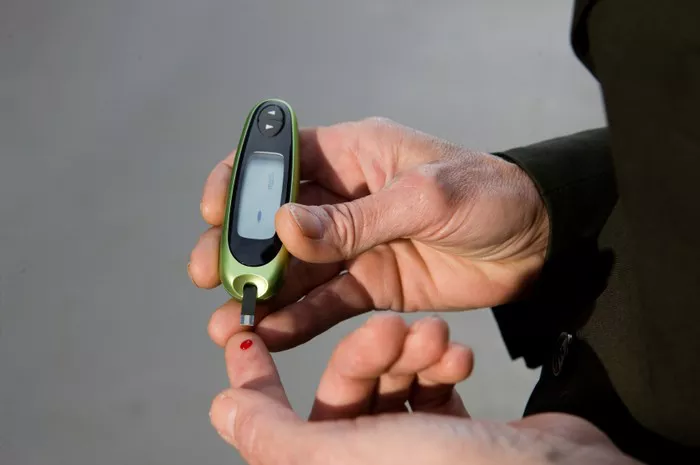Insulin resistance is a metabolic condition characterized by the body’s diminished ability to respond to the action of insulin, a hormone essential for regulating blood glucose levels. Over time, insulin resistance can lead to various health issues, including type 2 diabetes, cardiovascular diseases, and metabolic syndrome. However, with appropriate lifestyle changes, medications, and interventions, insulin resistance can be managed and even reversed. Recognizing the signs that insulin resistance is improving is crucial for both patients and healthcare providers. This article will explore the key indicators of reversing insulin resistance, providing a comprehensive understanding of this positive shift in metabolic health.
Understanding Insulin Resistance
Before delving into the signs of reversing insulin resistance, it is essential to understand the underlying mechanisms of the condition. Insulin is a hormone produced by the pancreas that allows cells to absorb glucose from the bloodstream for energy. In individuals with insulin resistance, the body’s cells become less responsive to insulin, necessitating higher levels of the hormone to achieve the same effect. This leads to elevated blood glucose levels and, over time, the pancreas may struggle to produce sufficient insulin, resulting in type 2 diabetes.
Lifestyle Changes and Interventions
Reversing insulin resistance often involves a multifaceted approach, including dietary modifications, physical activity, weight management, and sometimes medication. A diet rich in whole foods, low in refined sugars and carbohydrates, and high in fiber can significantly impact insulin sensitivity. Regular physical activity, especially resistance training and aerobic exercises, helps improve insulin action. Weight loss, even a modest reduction of 5-10% of body weight, can enhance insulin sensitivity. Additionally, certain medications, such as metformin, can be prescribed to help manage insulin resistance.
Signs Insulin Resistance is Reversing
Improved Blood Glucose Levels
One of the most direct indicators of reversing insulin resistance is a reduction in fasting blood glucose levels. Consistently lower fasting glucose readings, typically below 100 mg/dL, suggest that the body is better able to manage blood sugar levels. Additionally, improved postprandial (after meal) blood glucose readings indicate enhanced insulin sensitivity.
Lower Hemoglobin A1c Levels
Hemoglobin A1c (HbA1c) is a measure of average blood glucose levels over the past two to three months. A decreasing HbA1c level, ideally below 5.7%, signifies that blood glucose control is improving. This long-term marker is crucial for assessing the overall effectiveness of interventions aimed at reversing insulin resistance.
Reduced Insulin Levels
As insulin resistance diminishes, the pancreas no longer needs to produce as much insulin to maintain normal blood glucose levels. Lower fasting insulin levels and reduced insulin levels after meals are positive signs. Fasting insulin levels below 10 µU/mL are typically indicative of improved insulin sensitivity.
Weight Loss and Decreased Visceral Fat
Weight loss, particularly a reduction in visceral fat (fat stored around abdominal organs), is a significant sign of reversing insulin resistance. Visceral fat is metabolically active and contributes to insulin resistance. As this type of fat decreases, insulin sensitivity improves. This can be measured through waist circumference, with a reduction indicating progress.
Improved Lipid Profile
Insulin resistance often accompanies dyslipidemia, characterized by elevated triglycerides and low HDL (good) cholesterol levels. Improvement in these lipid parameters, such as lower triglyceride levels and higher HDL cholesterol levels, suggests better insulin sensitivity and overall metabolic health.
Increased Energy Levels and Reduced Fatigue
Individuals with insulin resistance often experience chronic fatigue due to poor glucose utilization. As insulin sensitivity improves, cells can more effectively use glucose for energy, leading to increased vitality and reduced fatigue. This enhanced energy can further motivate individuals to engage in physical activities, creating a positive feedback loop.
Decreased Blood Pressure
Insulin resistance is closely linked to hypertension (high blood pressure). As insulin sensitivity improves, there is often a corresponding reduction in blood pressure levels. Lower systolic and diastolic blood pressure readings can indicate improved vascular health and reduced cardiovascular risk.
Enhanced Satiety and Reduced Cravings
Improved insulin sensitivity can lead to more stable blood glucose levels, reducing the frequency and intensity of hunger and cravings, particularly for sugary and high-carbohydrate foods. Enhanced satiety after meals and less frequent snacking are positive signs of metabolic improvement.
Better Liver Function
Non-alcoholic fatty liver disease (NAFLD) is commonly associated with insulin resistance. As insulin sensitivity improves, liver function tends to normalize. This can be monitored through liver enzyme tests (ALT and AST levels), with decreasing values indicating better liver health.
Normalized Menstrual Cycles in Women
Insulin resistance can disrupt hormonal balance, leading to irregular menstrual cycles in women. As insulin sensitivity improves, menstrual cycles often become more regular, indicating hormonal normalization and better overall reproductive health.
Reduction in Inflammatory Markers
Chronic inflammation is a hallmark of insulin resistance. Improvement in insulin sensitivity is often accompanied by a decrease in inflammatory markers, such as C-reactive protein (CRP). Lower CRP levels reflect reduced systemic inflammation and a healthier metabolic state.
Improved Mood and Cognitive Function
Insulin resistance can affect brain function, leading to mood swings, depression, and cognitive impairment. As insulin sensitivity improves, many individuals report better mood stability, reduced anxiety, and enhanced cognitive clarity.
Lowered Risk of Cardiovascular Events
Insulin resistance significantly increases the risk of cardiovascular events such as heart attacks and strokes. As insulin sensitivity improves, this risk diminishes. Although this is a long-term indicator, a reduction in cardiovascular incidents or improved cardiac health metrics, such as echocardiograms and stress tests, can signify reversing insulin resistance.
Monitoring Progress
Effectively reversing insulin resistance requires regular monitoring and evaluation. Healthcare providers typically use a combination of blood tests, physical examinations, and patient-reported outcomes to assess progress. Key tests include:
- Fasting Blood Glucose and Insulin Tests: These provide a snapshot of current blood glucose and insulin levels.
- Oral Glucose Tolerance Test (OGTT): This test measures the body’s response to a glucose load and provides insights into glucose metabolism.
- Hemoglobin A1c Test: This long-term marker of blood glucose control is crucial for monitoring progress.
- Lipid Profile: Regular testing of cholesterol and triglyceride levels helps assess improvements in lipid metabolism.
- Inflammatory Markers: CRP and other markers can indicate changes in systemic inflammation.
- Body Composition Analysis: Techniques such as bioelectrical impedance analysis (BIA) or dual-energy X-ray absorptiometry (DEXA) scans can measure changes in body fat distribution.
See also: What’s the Link Between Insulin Resistance and Hypertension
Conclusion
Reversing insulin resistance is a complex but achievable goal that requires a combination of dietary changes, physical activity, weight management, and sometimes medication. Recognizing the signs of improving insulin sensitivity, such as better blood glucose control, weight loss, improved lipid profiles, and enhanced overall well-being, is crucial for maintaining motivation and adjusting treatment plans. Regular monitoring and collaboration with healthcare providers are essential to ensure sustained progress and long-term health benefits. With persistence and a comprehensive approach, individuals can significantly improve their metabolic health and reduce the risk of associated diseases.
Related topics:
How Insulin Resistance Leads to Type 2 Diabetes

























